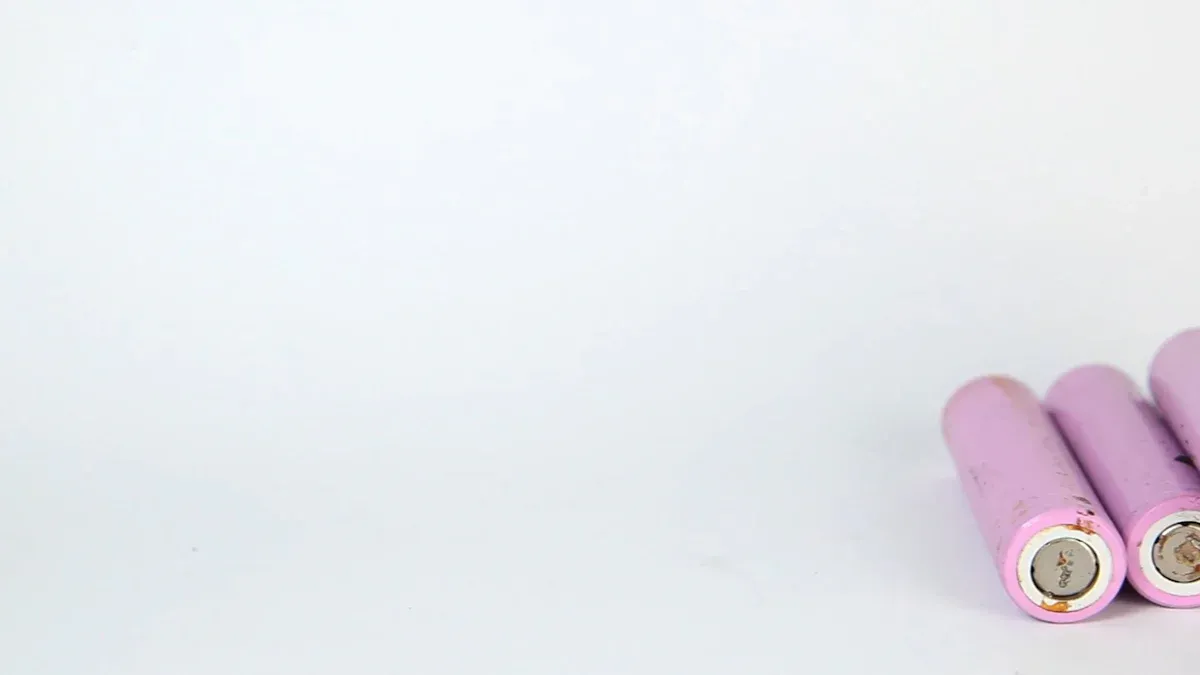
If you want the best performance and longest life from your 18650 battery, always pay attention to how you charge it. The Voltage Charge Methods you choose play a big role in battery health. Charging to full charge at the wrong voltage can speed up aging and lower the battery’s capacity. Studies show that charging a li-ion battery with careful control of voltage and current helps you avoid problems like lithium plating. You can keep battery health strong by preventing the loss of active materials, which often happens when you push for full charge too often. Using smart charging methods gives you more full charge cycles and keeps your li-ion battery working safely for longer.
Voltage Charge Methods Overview
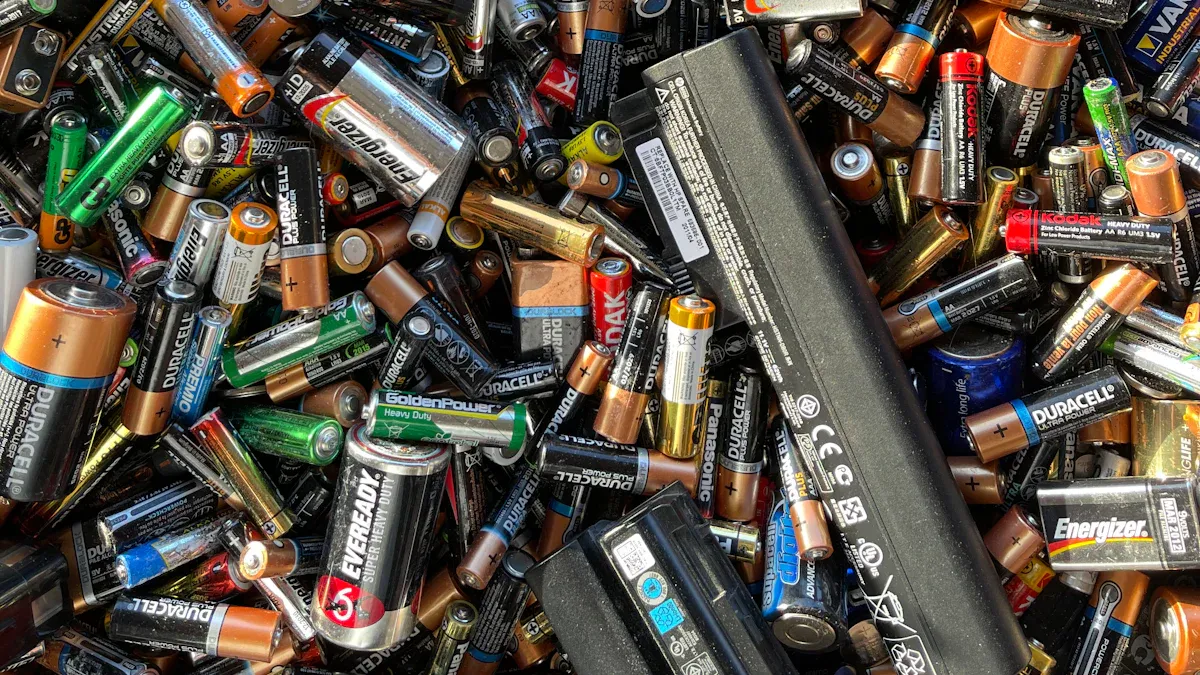
Why Voltage Matters
When you look at voltage charge methods for 18650 lithium batteries, you see how much voltage affects battery performance and safety. The voltage you choose for charging controls how much energy the battery can store and how long it will last. Charging lithium-ion batteries to the right voltage keeps the battery healthy and prevents dangerous situations.
Most lithium batteries use a constant current/constant voltage (CC/CV) charging method. You start with a steady current until the battery reaches a set voltage, then the charger holds that voltage while the current drops. For 18650 li-ion cells, the standard maximum voltage is 4.2V per cell. Charging above this voltage can cause chemical changes inside the battery. These changes damage the electrodes and lower battery capacity. Overcharging also increases the risk of overheating and can lead to thermal runaway, which is very dangerous.
Tipp: Verwenden Sie immer eine charger designed for your battery’s chemistry and voltage range. This helps you avoid overcharge and keeps your battery safe.
The table below shows common charger voltages and their typical current limits for lithium batteries:
| Charger Voltage (V) | Typical Max Current (A) | Anmerkungen |
|---|---|---|
| 4.2 | 2 | Standard max voltage per 18650 cell; do not exceed |
| 8.4 | 1 | For 2-cell packs (series) |
| 12.6 | 4 | For 3-cell packs (series) |
You should always keep the voltage within the safe range, usually between 2.5V and 4.2V for li-ion cells. Battery Management Systems (BMS) help by making sure each cell stays within these limits. This protects the battery from damage and keeps performance high.
Standard vs. Partial Charging
You have several voltage charge methods to choose from when charging lithium batteries. The most common method is to charge to a full charge at 4.2V per cell. This gives you the highest battery capacity and the most energy for your device. However, charging to 4.2V every time can shorten the battery’s cycle life. Each time you charge to full, the battery experiences more stress, which leads to faster aging.
Partial charging is another method you can use. With this method, you charge the battery to a lower voltage, such as 4.0V or even 3.92V per cell. This reduces the stress on the battery and can double or even triple the number of charge cycles before the battery wears out. The trade-off is that you get less usable battery capacity with each charge.
Here is a table that compares different voltage charge methods for 18650 lithium batteries:
| Charge Voltage (V) | Typische Lebensdauer (Zyklen) | Usable Capacity Change (%) |
|---|---|---|
| 4.20 | 300–500 | 0% (maximum capacity) |
| 4.10 | 600–1,000 | ~10% less |
| 4.00 | 1,200–2,000 | ~20% less |
| 3.92 (optimal) | ~2,400–4,000 | ~40% less |
Every time you lower the charge voltage by 0.10V, you almost double the cycle life of your battery. For example, charging to 4.0V instead of 4.2V can give you up to four times more cycles. However, you lose about 20% of the battery capacity with each charge. If you charge to 3.92V, you can get up to 4,000 cycles, but you lose about 40% of the capacity. The good news is that this lost capacity is not permanent. If you need full charge for a special occasion, you can charge back up to 4.2V.
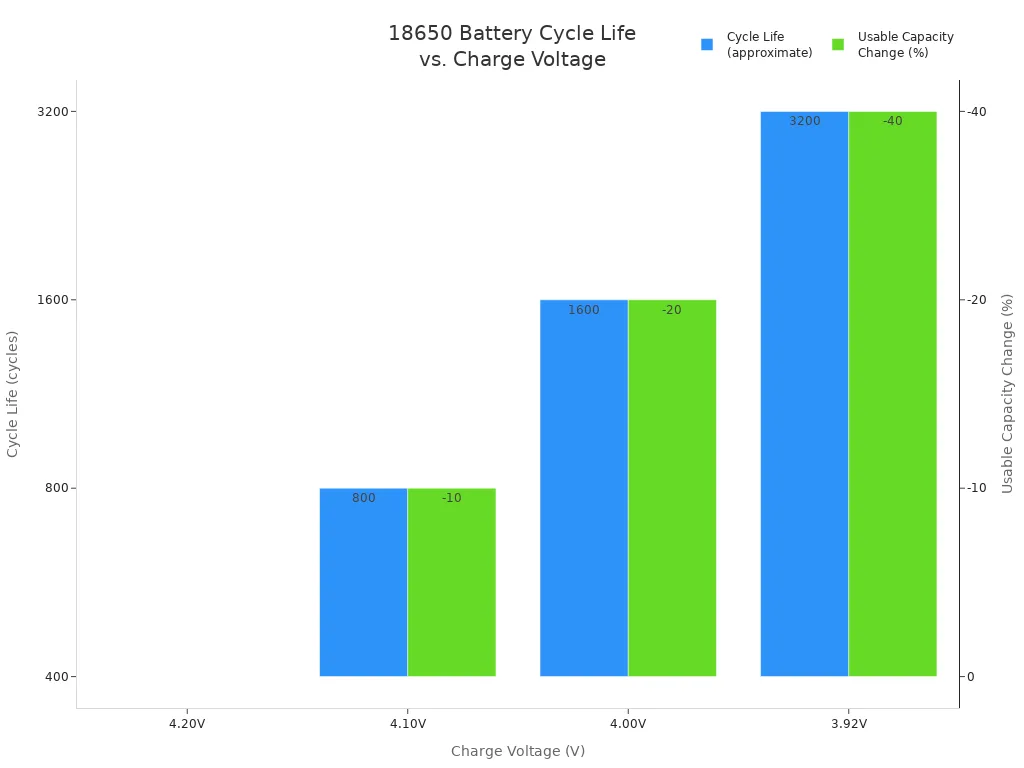
Partial charging also helps keep the battery’s chemical structure stable. When you avoid full charge, you reduce the risk of lithium plating and other harmful reactions inside the battery. This keeps the battery safe and helps maintain battery performance over time. Studies show that partial charging leads to less loss of active materials and lower internal resistance. You also see less damage to the battery’s electrodes, which means better long-term battery performance.
Anmerkung: If you use a BMS, make sure your charge voltage is high enough for the system to balance all cells. Charging too low may prevent proper balancing, which can affect battery performance and safety.
When you choose between standard and partial charging methods, think about what matters most for your device. If you need maximum battery capacity for short-term use, full charge at 4.2V works best. If you want your battery to last as long as possible, partial charging at 4.0V or 3.92V is the better choice. By understanding these voltage charge methods, you can make smart choices that improve battery performance and extend the life of your lithium batteries.
Optimal Settings for Lithium Batteries
Recommended Charge Voltages
You can get the best battery life and performance from your lithium batteries by choosing the right charge voltage. Most major 18650 battery manufacturers recommend not exceeding 4.2 volts when charging. This voltage gives you the highest battery capacity, but it can reduce battery longevity if you always charge to this level. Many experts suggest partial charging to around 4.0 volts or even 3.92 volts. This method helps you increase battery longevity and keeps your lithium ion cells healthier for more cycles.
Here are some key recommendations from battery makers and industry experts:
- Do not charge above 4.2 V to avoid overcharging and damage.
- Partial charging to about 3.8 V or 4.0 V can reduce stress and extend battery life, but you will have less battery capacity per charge.
- Avoid discharging below 3.0 V. Try to stop discharge at about 3.2 V to help battery longevity.
- Keep lithium batteries at room temperature (20°C to 25°C) during charging for optimal performance and efficiency.
- Always use chargers made for 18650 li-ion batteries to control voltage and current safely.
You can see the recommended voltage settings for different lithium battery chemistries in the table below:
| Parameter | Lithium-Kobalt-Oxid (LiCoO2) | LiFePO4 (Lithium-Eisen-Phosphat) |
|---|---|---|
| Nennspannung | 3.7 V | 3.2 V |
| Maximum Charge Voltage | 4.2 V | 3.6 V |
| Minimum Discharge Cutoff Voltage | 2.75 V | 2.0 V |
Manufacturers set these limits to protect battery performance and battery longevity. Charging above the maximum voltage or discharging below the minimum can damage lithium ion cells and lower battery life expectancy.
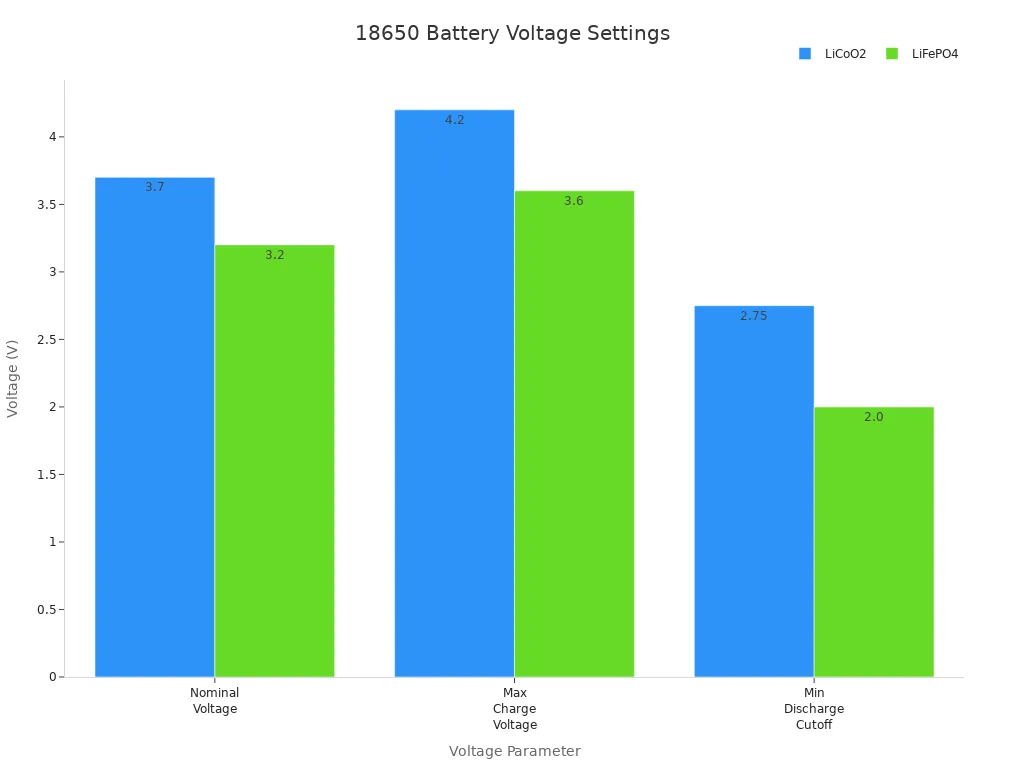
You can also improve battery longevity by using protection circuits. These circuits prevent overcharge, overdischarge, and short circuits. Many users choose pre-built charging modules like the TP4056 for safe and efficient charging. These modules help you control charge efficiency and keep your lithium batteries safe.
Balancing Capacity and Longevity
You need to find the right balance between battery capacity and battery longevity. Charging to the full charge voltage of 4.2 V gives you the most energy, but it puts more stress on your lithium ion cells. This stress can lower battery life and reduce battery performance over time. If you want to maximize battery longevity, you should consider partial charging. Charging to 4.0 V or 3.92 V can double or even triple the number of cycles your battery can handle. You will lose some battery capacity, but your battery lifespan will increase.
Here are some practical tips to help you manage charge cycles and get optimal performance:
-
Set Custom Voltage Limits:
Many modern chargers let you set custom voltage limits. You can do this by choosing charge ICs that allow you to adjust the maximum voltage and current. Some chargers use resistors or logic-level pins for easy hardware changes. Others use microcontrollers and digital protocols like I2C for more control. By setting a lower charge voltage, you can boost battery longevity and charge efficiency. -
Monitor Charging and Discharge:
Always keep an eye on your battery voltage during charging and discharge. Avoid letting your lithium batteries drop below 3.0 V. Try to stop charging before reaching the full charge state if you want to extend battery life. Many users find that charging between 30% and 80% state of charge gives the best mix of battery performance and longevity. -
Use a Battery Management System (BMS):
A good BMS helps balance the cells in your lithium battery pack. It monitors each cell’s voltage and adjusts charging and discharge to keep everything safe. Balanced charging prevents overcharge and overdischarge, which protects battery capacity and battery life. In real-world use, a BMS can increase system capacity and efficiency by up to 15% over a year. -
Adapt to Your Usage Patterns:
Your charging habits affect battery longevity and performance. If you often charge to full, your battery may wear out faster. If you use partial charging and avoid deep discharge, you will see better battery life and battery performance. The constant voltage phase during charging is the most stable for monitoring battery health. This phase helps you estimate the state of health and manage battery life expectancy.
Tipp: Always use chargers designed for lithium ion cells. Avoid charging in freezing temperatures, and store your lithium batteries at about 50% charge in a dry, room-temperature place for the best battery lifespan.
You can also consult trusted sources like batteryuniversity.com for up-to-date advice on lithium battery charging. Fenix Lighting and other industry leaders recommend partial charging, using protection circuits, and responsible recycling to keep your batteries safe and efficient.
By following these optimal settings and practical steps, you will get the best charge efficiency, battery performance, and battery longevity from your lithium batteries. You will also reduce the risk of damage and keep your devices running longer.
Safe Charging for Li-ion Packs
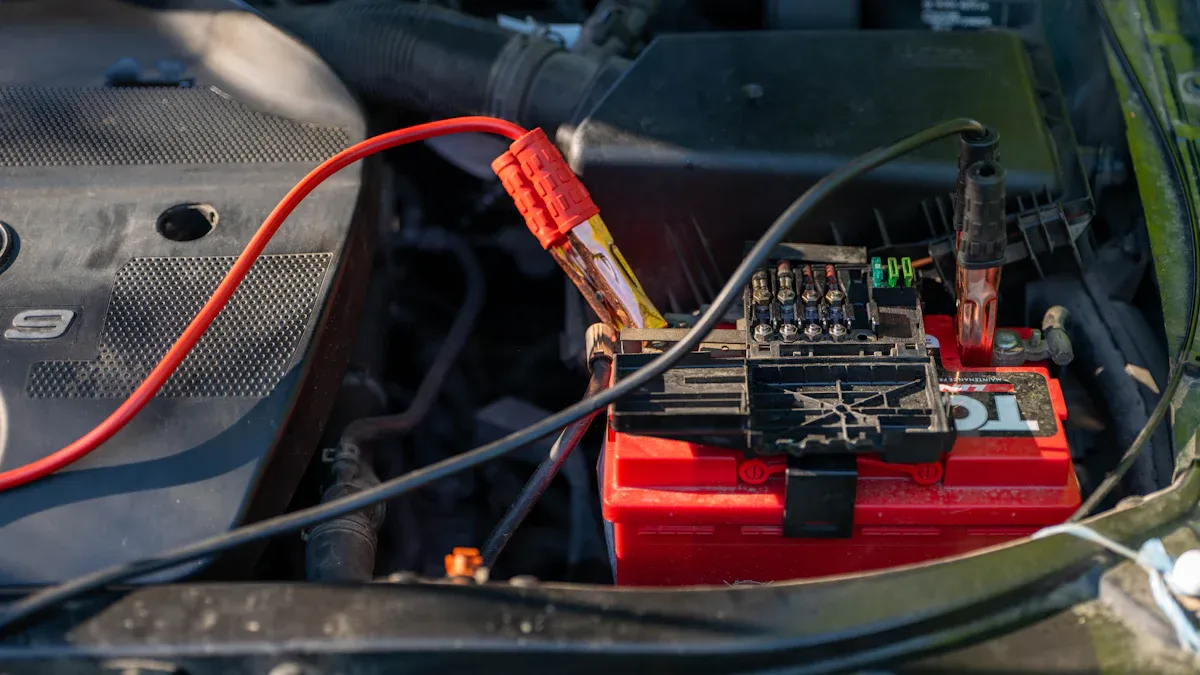
Temperature and Current Limits
You must keep your li-ion battery pack safe during charging. Always charge your battery pack within the recommended temperature range. Charging a lithium battery pack below 0°C can cause lithium plating. This can damage your battery pack and make it unsafe. Charging above 45°C speeds up chemical breakdown. Your battery pack may swell, lose capacity, or even catch fire. The best charging temperature for a li-ion battery pack is between 10°C and 30°C. Never charge your battery pack above 50°C.
Here is a table to help you remember the safe charging limits for your li-ion battery pack:
| Parameter | Recommended Range / Limit | Anmerkungen |
|---|---|---|
| Charging Temperature Range | 0°C to 45°C (32°F to 113°F) | No charging below 0°C; best between 10°C and 30°C |
| Ladestrom | Reduced at lower temperatures | Lower current near freezing to protect the battery pack |
| High Temperature Limit | Charging prohibited above 50°C (122°F) | Reduce charging voltage above 45°C for battery safety |
| Charging Voltage Adjustment | Decrease by 3mV per °C above 25°C | Helps battery pack longevity |
Charging your battery pack at a moderate current, such as 0.5C, helps keep your li-ion battery healthy. Fast charging creates extra heat and can shorten the life of your battery pack. Always use a charger made for your lithium battery pack. If you notice your battery pack getting hot, stop charging and let it cool. Signs of heat damage include swelling, leaks, or strange smells. These signs mean your battery pack is unsafe to use.
Tipp: Charging your battery pack in a cool, dry place improves safety and efficiency. Never charge a damaged battery pack.
Cell Balancing Techniques
A battery management system is very important for your li-ion battery pack. The battery management system checks the voltage, current, and temperature of each cell in your battery pack. It stops charging if any cell in the battery pack gets too high or too low. This keeps your battery pack safe and prevents overcharge or deep discharge.
The battery management system also balances the cells in your battery pack. If one cell in your battery pack charges faster than the others, the battery management system moves energy to the lower cells. This keeps all cells in your battery pack at the same voltage. Balanced cells help your battery pack last longer and work better.
There are two main ways to balance cells in a li-ion battery pack:
- Passive balancing: The battery management system removes extra energy from higher cells as heat. This method is simple but wastes some energy.
- Active balancing: The battery management system moves energy from higher cells to lower cells. This method saves energy and improves efficiency. Active balancing works well for large lithium battery packs and helps your battery pack last longer.
A good battery management system protects your battery pack from overcharge, over-discharge, and overheating. It also helps your battery pack keep its capacity and efficiency over many cycles. Always choose a battery pack with a strong battery management system for the best safety and performance.
Anmerkung: Modern battery management systems use smart sensors and algorithms. These systems watch your battery pack in real time and adjust charging for the best efficiency and safety.
Storage and Usage Tips
Storing at Safe Voltage
You can protect the longevity of your li-ion battery pack by storing it at the right voltage. Never store your battery pack at full charge for long periods. A full charge at 4.2V increases chemical activity and speeds up battery life loss. Instead, keep your li-ion battery pack at about 3.7V to 3.8V per cell. This voltage equals 40-50% charge and helps your battery pack keep its battery capacity for years. Many smart chargers have a “STORE” mode that sets your battery pack to this safe voltage. If you store your battery pack at this level, you slow down self-discharge and reduce battery pack degradation.
- Store your li-ion battery pack at 3.7V to 3.8V (40-50% charge).
- Avoid full charge storage to protect battery life.
- Check your battery pack every 2-3 months and recharge if needed.
- Keep your battery pack in a cool, dry place.
Battery University shows that storing your li-ion battery pack at 40% charge keeps battery life strong. If you store your battery pack at 3.7V, you can keep 91% of battery capacity after 15 years at room temperature. Storing at full charge drops this to 84%.
| Temperature (°C) | Capacity Retention at 40% SoC (%) | Capacity Retention at 100% SoC (%) |
|---|---|---|
| 0 | ~98 | ~94 |
| 25 | ~96 | ~80 |
| 40 | ~85 | ~65 |
| 60 | ~75 (after 3 months) | ~60 (after 3 months) |
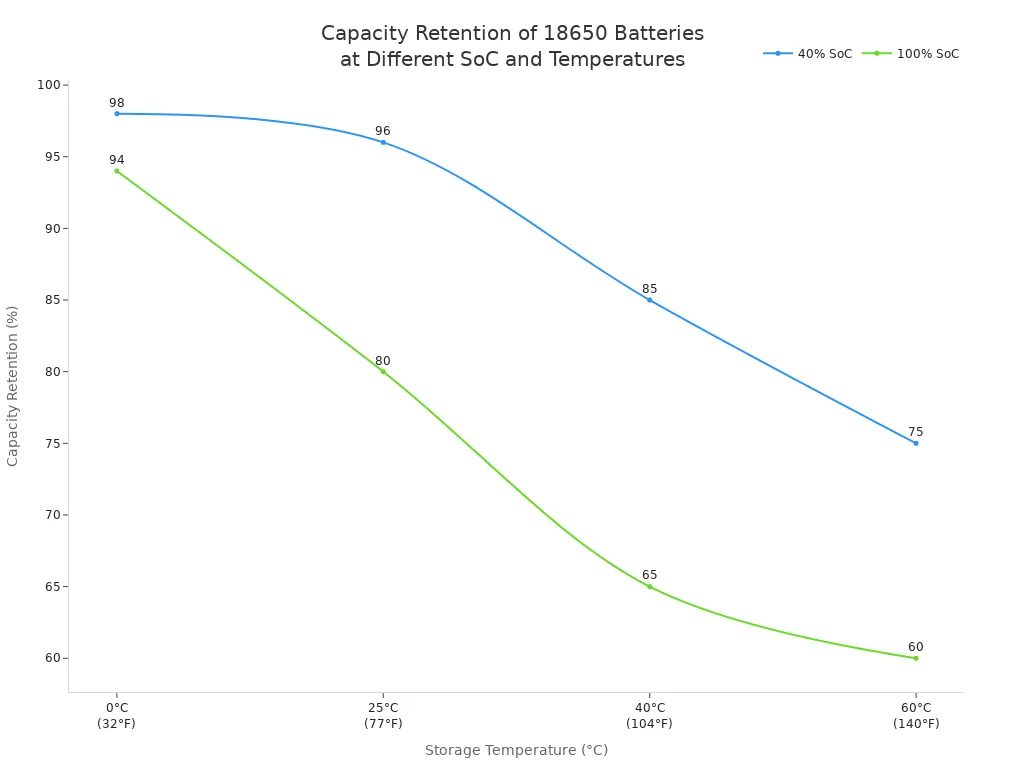
Rotating Battery Use
You can extend the longevity of your li-ion battery pack by rotating the use of each battery. When you use only one battery pack over and over, it wears out faster. Rotate your li-ion battery packs so each one gets the same number of charge and discharge cycles. This keeps battery life even and helps your pack last longer. Always avoid deep discharge. Never run your battery pack completely flat. Deep discharge hurts battery life and can damage your li-ion battery pack.
- Rotate all li-ion battery packs in your collection.
- Avoid deep discharge and full charge cycles when possible.
- Store unused battery packs at 50% charge.
- Check your battery pack’s connections and BMS for wear.
If you use your li-ion battery pack in a group, make sure all packs have similar voltage and battery capacity. Uneven use causes some packs to age faster, which lowers battery life for the whole group. Always match your li-ion battery packs for best performance and longevity.
You can boost battery life and performance for your li-ion battery pack by following proven voltage charge methods. Keep your battery between 3.0V and 4.0V to avoid stress from full charge cycles. Use smart chargers and always monitor your battery pack during charge. Never leave your li-ion battery charging unattended. Rotate your battery pack use and store at partial charge to extend battery life. A balanced approach gives you the best performance, longer battery life, and a safer li-ion battery pack.
Remember: Consistent care and the right charge habits help your li-ion battery pack deliver reliable performance and full charge cycles for years.
FAQ
What is the safest voltage to charge a li-ion battery?
You should charge your li-ion battery to 4.2V for full capacity. For longer life, stop at 4.0V. This keeps your li-ion battery safe and helps prevent damage.
Can I use any charger for my li-ion battery?
You must use a charger made for li-ion batteries. Other chargers may overcharge or undercharge your battery. This can cause your li-ion battery to lose capacity or become unsafe.
How do I store a li-ion battery for a long time?
Store your li-ion battery at about 3.7V. This is around 50% charge. Keeping your li-ion battery at this voltage helps slow aging and keeps your battery healthy.
Tipp: Check your li-ion battery every few months. Recharge if the voltage drops below 3.6V.
Why does my li-ion battery lose capacity over time?
Your li-ion battery loses capacity because of chemical changes inside. Charging to full often or storing at high voltage speeds up this process. Using partial charging and safe storage helps your li-ion battery last longer.
| Cause | Effect on li-ion battery |
|---|---|
| Full charge often | Faster capacity loss |
| High storage voltage | Kürzere Lebensdauer der Batterie |

